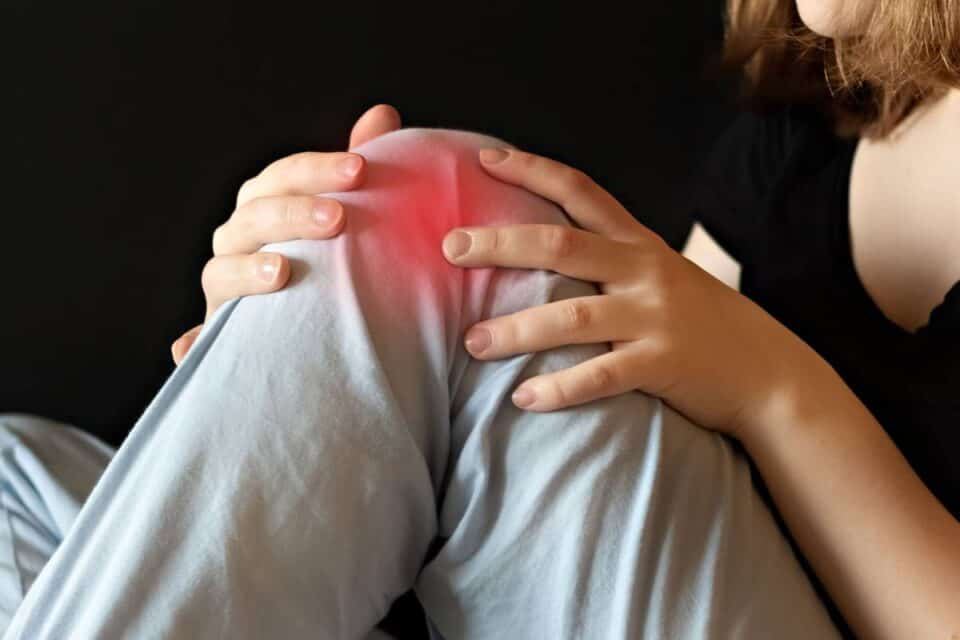Ever felt like your body was a human barometer? You’re not alone. As a chiropractor in Mt. Pleasant, I’ve heard countless patients swear they can predict rain with their aching joints. But is there real science behind this weather-pain connection, or is it just another urban myth?
From creaky knees to throbbing migraines, the impact of humidity on our health is more complex than you might think. In this article, we’ll explore how those sticky, muggy days could be doing more than just messing up your hair – they might be messing with your pain levels too.
Key Takeaways
- High humidity levels can exacerbate joint pain, particularly in individuals with arthritis and other chronic conditions.
- Muscle pain and stiffness may increase in humid conditions due to dehydration and changes in blood flow.
- Nerve pain can be influenced by humidity through its effects on barometric pressure and tissue swelling.
Table of Contents
- Historical Perspective: Weather and Pain
- Understanding Humidity and Its Effects on the Body
- The Science Behind Humidity and Joint Pain
- Humidity’s Influence on Muscle Pain
- Nerve Pain and Humidity: Exploring the Connection
- Weather Sensitivity and Chronic Pain Conditions
- Latest Research and Scientific Studies
- Managing Pain in Humid Conditions
- Alternative Therapies for Weather-Related Pain
- Technological Advancements in Tracking Weather-Related Pain
- Expert Opinion
- Specialized Treatments for Weather-Sensitive Conditions
- FAQs
- Conclusion
Historical Perspective: Weather and Pain
The idea that weather can influence our health isn’t new. In fact, it’s been around for millennia. Ancient Greek physicians like Hippocrates observed that certain illnesses seemed to worsen with changes in the seasons1.
While we’ve come a long way since then, the belief that weather – particularly humidity – can affect pain levels has persisted. It wasn’t until the 20th century that scientists began to study this phenomenon in earnest,2 trying to separate fact from fiction.
Experience the BodyFix Difference
Experience the difference that patient-centric, whole-body chiropractic care can make. Discover how The BodyFix’s unique approach addresses not just your pain, but your overall wellness for lasting results.
Understanding Humidity and Its Effects on the Body
So, what exactly is humidity?
Simply put, it’s the amount of water vapor present in the air. When we talk about humidity affecting our bodies, we’re usually referring to relative humidity – the percentage of water vapor in the air compared to the maximum amount it could hold at that temperature.
High humidity can make us feel uncomfortable because it interferes with our body’s natural cooling mechanism. When we sweat, the evaporation of that moisture cools us down. But in humid conditions, that evaporation is slowed, leaving us feeling hot and sticky.
The effects of humidity go beyond mere discomfort. It’s closely tied to barometric pressure – the weight of the atmosphere pressing down on us. When humidity rises, it often coincides with a drop in barometric pressure, which many people with chronic pain conditions report as a trigger for their symptoms.
The Science Behind Humidity and Joint Pain
Now, let’s get into the nitty-gritty of how humidity affects our joints. As a chiropractor, I see this firsthand in my practice, especially among patients with arthritis.
High humidity can cause several changes in our bodies that may lead to increased joint pain. 3Humid air can cause our bodies to retain more fluid, which can lead to swelling in the joints.
Some studies suggest that changes in barometric pressure associated with humidity can cause the cartilage in our joints to expand, leading to increased pressure and pain.
The fluid that lubricates our joints may become more viscous in humid conditions, potentially leading to increased friction and discomfort.
Research has shown that people with rheumatoid arthritis often report increased pain and stiffness during periods of high humidity. While the exact mechanisms aren’t fully understood, it’s clear that there’s more to this connection than mere coincidence.
Humidity’s Influence on Muscle Pain
But it’s not just our joints that are affected by humidity. Our muscles can also feel the impact. Have you ever noticed that your muscles feel extra tight and achy on a humid day? There are a few reasons for this. In humid conditions, our bodies work harder to cool down, which can lead to dehydration. This, in turn, can cause muscle cramps and tension.
High humidity can cause blood vessels to dilate, potentially leading to increased pressure in the muscles. If you exercise in humid conditions, you may experience more muscle soreness due to increased stress on your body.
For those with conditions like fibromyalgia, the effects can be even more pronounced. Many of my patients with fibromyalgia report that their symptoms worsen significantly on humid days.
Nerve Pain and Humidity: Exploring the Connection
Now, let’s talk about how humidity affects our nerves. This is particularly relevant for patients I see with conditions like sciatica or neuropathy.
Humidity can impact nerve pain in several ways. Increased humidity can cause tissues to swell, potentially putting pressure on nerves. Barometric pressure changes can affect the pressure within the body, potentially irritating sensitive nerves. Humid air often feels warmer, which can increase sensitivity in some nerve conditions.
While the research in this area is still evolving, many of my patients with nerve-related pain conditions report increased discomfort during periods of high humidity.
Weather Sensitivity and Chronic Pain Conditions
When it comes to chronic pain conditions, the impact of humidity can be particularly pronounced. Many patients with osteoarthritis report increased pain and stiffness in humid conditions.
Studies have shown a correlation between humidity levels and reported pain in rheumatoid arthritis patients4. As mentioned earlier, fibromyalgia symptoms often worsen in humid weather. Some people report an increase in migraine frequency or intensity during humid periods.
It’s important to note that while many people report these connections, the scientific evidence is still somewhat mixed. Everyone’s body responds differently to weather changes, which can make studying these effects challenging.
![Can Humidity Cause Joint Muscle or Nerve Pain? [Answered] Can Humidity Cause Joint Muscle or Nerve Pain?](https://thebodyfixchiro.com/wp-content/uploads/CanHumidityCauseJointMuscleOrNervePain.jpg)
Latest Research and Scientific Studies
Recent research has shed more light on the connection between humidity and pain. A 2019 study published in the journal “Pain” found that changes in relative humidity were indeed associated with increased pain in people with chronic conditions.
Another interesting area of research is looking at the role of inflammation in weather-related pain. Some scientists theorize that changes in humidity and barometric pressure may trigger inflammatory responses in the body, leading to increased pain.
Managing Pain in Humid Conditions
So, what can you do if you find that humidity worsens your pain?
There are several strategies I often recommend to my patients. Using air conditioning or a dehumidifier can help keep indoor humidity levels comfortable. Staying hydrated by drinking plenty of electrolyte water helps your body regulate its temperature and prevent muscle cramps.
Light, low-impact exercises like swimming or yoga can help keep your joints and muscles flexible. Eating anti-inflammatory foods may help reduce pain flare-ups. Wearing loose, breathable clothing in humid conditions can help your body regulate its temperature more effectively.
Alternative Therapies for Weather-Related Pain
In addition to conventional treatments, many of my patients find relief through alternative therapies.
Some studies suggest that acupuncture may help reduce weather-related pain. Regular lymphatic massage can help keep muscles relaxed and reduce swellings. Heat therapy can be particularly effective in managing pain and reducing inflammation. Techniques like meditation within our Red Light Therapy bed can help manage the stress that often accompanies chronic pain.
It’s important to note that while cold therapy was once commonly recommended, recent research has called its effectiveness into question.
In fact, I’ve written extensively about this topic on my blog in an article titled “Ice vs. Heat: Why Ice Might Be Your Injury’s Worst Enemy“. I encourage you to read more about it to understand why heat therapy is often a superior choice for managing weather-related pain and promoting healing.
Heat therapy can be applied in various ways, such as warm baths, heating pads, or infrared lamps. It helps increase blood flow to the affected area, which can reduce stiffness, relax muscles, and provide pain relief. We don’t want fluid to be trapped in muscles or joints so we need a ton of lymphatic drainage techniques.
Technological Advancements in Tracking Weather-Related Pain
Technology is playing an increasingly important role in helping people manage weather-related pain. There are now several apps and devices that can help track your pain levels alongside weather data, allowing you to identify patterns and prepare for potential flare-ups. Some smart home systems can even be programmed to adjust humidity levels automatically based on your preferences and pain patterns.
Expert Opinion
If you’re finding that weather changes are significantly impacting your joint pain or overall quality of life, it might be beneficial to discuss this in more detail. I’d be happy to schedule a consultation where we can dive deeper into your specific symptoms, explore potential management strategies, and develop a personalized plan tailored to your needs.
During our session, we could review your pain patterns, discuss any current treatments, and consider additional options that might help you stay comfortable, regardless of the forecast. It’s an opportunity to address any questions or concerns you may have and to ensure you’re equipped with the most effective tools for managing your condition. Even blood pressure is affected by humidity!
Specialized Treatments for Weather-Sensitive Conditions
Let’s talk about our SpineMed Decompression therapy – it’s been nothing short of a game-changer for many of our patients. You know those folks whose back pain flares up with every storm front? Yeah, we’re helping them find relief, rain or shine.
Here’s how it works: SpineMed gently stretches your spine, taking pressure off the discs and nerves. It’s like giving your back a mini-vacation from gravity. This can be especially helpful when barometric pressure changes mess with your pain levels. Many patients report feeling better after just a few sessions, and over time, it can lead to lasting improvements.
But we don’t stop there.
We believe in a holistic approach, which is why we combine SpineMed with good old-fashioned chiropractic care. Chiropractors are like detectives for your spine, finding and addressing those sneaky dysfunctional patterns that might be contributing to your weather sensitivity.
Regular 30-minute BodyFix chiropractic treatments can help keep your joints, muscles, and nerves in tip-top shape, improving your overall function and potentially reducing those weather-related flare-ups. Plus, our team can offer advice on exercises, stretches, and lifestyle changes to support your spine health between visits.
By bringing together cutting-edge technology like SpineMed and the time-tested benefits of chiropractic care, we’re able to offer a comprehensive approach that adapts to your needs – and the weather. Because let’s face it, you’ve got better things to do than play meteorologist with your body.
So why not give us a visit? Whether it’s sunny, rainy, or anything in between, we’re here to help you feel your best. After all, life’s too short to let the weather forecast dictate how you feel.
Experience the BodyFix Difference
Experience the difference that patient-centric, whole-body chiropractic care can make. Discover how The BodyFix’s unique approach addresses not just your pain, but your overall wellness for lasting results.
FAQs
How can chiropractic care help with weather-related pain?
Why is regular chiropractic care beneficial for managing weather-sensitive conditions?
How can I manage my pain on humid days?
Can tracking the weather help me manage my pain better?
How do treatments like spinal decompression help with humidity-related pain?
Conclusion
As we’ve explored, the relationship between humidity and pain is complex, but slightly understanding some of it can be a game-changer in managing your discomfort. Whether you’re dealing with achy joints, muscle tension, or nerve pain, knowing how weather affects your body empowers you to take proactive steps.
Remember, you’re not at the mercy of the weather forecast. With the right strategies and professional guidance, you can navigate even the most humid days with greater comfort and ease. At The Body Fix Chiropractic, we’re committed to helping you find relief, no matter what the barometer says.
Ready to take control of your weather-related pain? Don’t let another humid day hold you back. The more knowledge you have on how your body reacts to your environment will give you confidence on a direction on how to manage it. Schedule your appointment now and let’s create a personalized plan to keep you feeling your best, rain or shine. Your body will thank you for taking this proactive step towards better health and comfort. Remember, in Mt. Pleasant, the forecast might be unpredictable, but your wellness doesn’t have to be!
Blog Disclaimer: The information provided on The BodyFix Chiro blog is for general informational and educational purposes only and is not intended as medical advice. These articles reflect our opinions and experiences but should not be used to diagnose or treat any health conditions. Always consult with your physician, chiropractor, or other qualified healthcare provider before starting any new treatment, exercise program, or making changes to your health routine. Any actions you take based on information from this blog are entirely at your own risk, and The BodyFix Chiro and its contributors disclaim any liability for the decisions you make based on this information.




